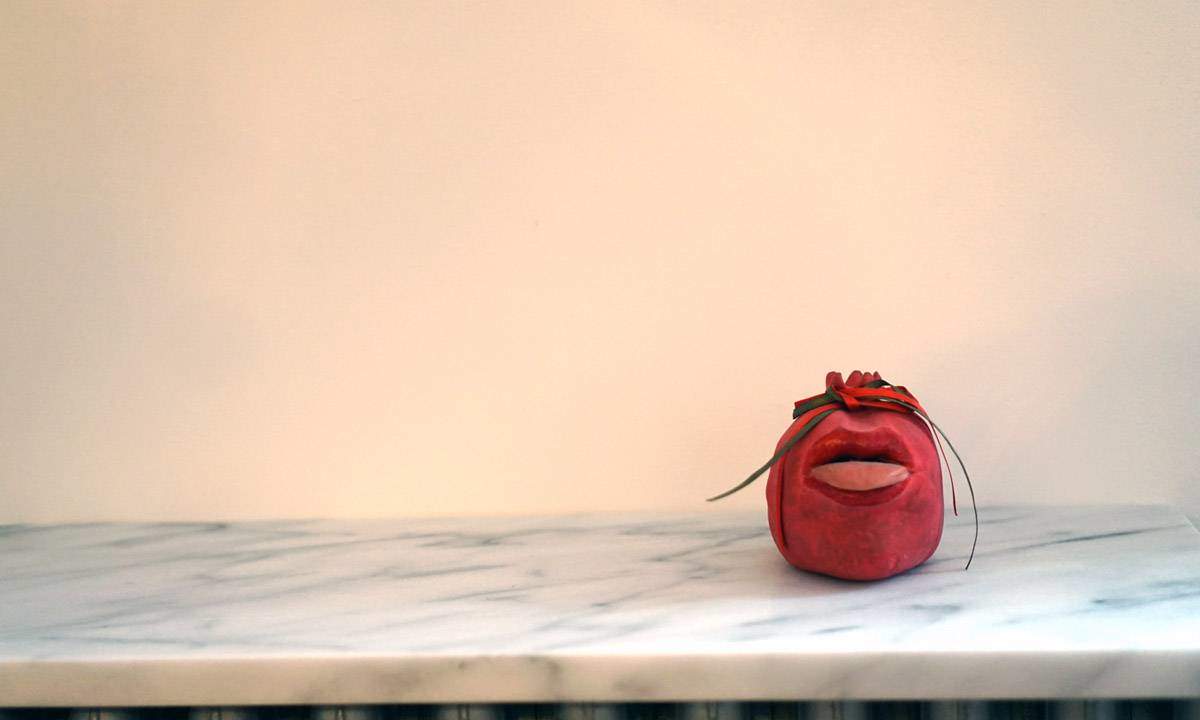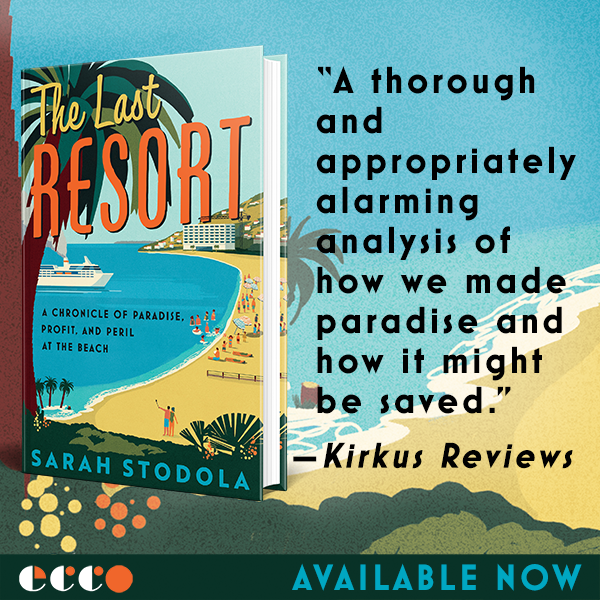Quite some time ago, having just turned 21, I traveled with my dad to Tanzania, where he’d once lived. It was the first trip of my life that could reasonably qualify as exotic, even with my father leading the way. After a layover, we flew on an enormous, nearly empty plane from Amsterdam to Dar es Salaam and endured the most convulsive turbulence I’ve felt before or since. At our hotel, I avoided the tap water obsessively. From Dar es Salaam, we went to the town where my dad had taught English in the Peace Corps and we went on safari. As a markedly unglamorous girl from the Midwest, who knows where my sense of entitlement came from, but I considered this the first step toward a manifest destiny of adventure, delights, etc.
Souvenirs became the tangible representation of this destiny. I envisioned an apartment—it would be an apartment, because I would live in a city—brimming with crafts and keepsakes acquired along the way of something that was never over. Visitors to my apartment would learn a lot about the elaborate depths of me just by poking around, lucky them.
In Tanzania, my father bought a tanzanite stone for me that I still have today, and still love, although I rarely wear it because the chain holding it around my neck has broken three times. Each of those times, I found the gem as it plunked to the ground, but I can feel my luck about to run out. For myself on that trip I bought a pair of ebony candlesticks and an ebony canister that today holds an accumulation of stray safety pins in my kitchen.
On Zanzibar, the island off the coast of Tanzania’s mainland, which we also visited on that trip, I almost bought one of the chests for which the island is famous, but the prospect of shipping it home became too much for me, because of the complication and also because I didn’t really have a home, just a three-bedroom house I’d be renting with two friends for the next couple semesters until we graduated, with my portion of the rent running $240 per month. I remember that shop well though, the monotone color scheme, the many chests strewn about the room, and me hemming and hawing while the salesman tried to determine how close I was to pulling the trigger. I remember me kneeling by the one I’d chosen as my favorite, opening and closing it, while my father and the salesmen loomed above. It stands as the great souvenir that might have been.
The following summer, just after graduating college, I got a Eurail pass and headed around via train by myself for a couple of months. I learned a bit about Europe, but spent most of my time with other Americans, sometimes Brits or Australians. I learned more about a certain approach to my own culture than I did about the cultures I was visiting. I learned to grow bored by great cathedrals, and to seek out an Irish pub straight away from the train station. I learned that sometimes a certain hostel was the whole point. I also learned to turn the state of being lonely from time to time into a positive that has served me well since. Every museum I went to, I bought postcards of my favorite works in the museum shop, to remember them better later.
The basic art education would continue. Not long after returning to the States at the end of that summer, I moved to Washington DC. From there, I visited New York City and the Metropolitan Museum of Art, where I bought a poster of Van Gogh’s “Irises” painting from 1890. I hung it rather proudly in the Foggy Bottom house I shared with four other people. I loved that painting. A coworker of my best friend and roommate had a different take when she saw it, thanks to her arts background and status background and also by her job at the Smithsonian. I don’t remember the word she used to describe that poster’s presence but it was something to along the lines of tacky. I’d had it dry-mounted before hanging it to give it some heft and everything, and I scoffed at her snobbery when told what she’d said, but the point was taken.
Finally, like I’d long sworn I would, I moved to New York. I’d saved the art museum postcards from Europe for a year and a half and then, when I moved into an apartment in Williamsburg, Brooklyn, bought a dozen cheap frames for them at Ikea, which I spray-painted white. I arranged them above my bed and voila, my first gallery wall. This passed for art when I was too poor to buy even prints of paintings, much less have them framed, much less imagine acquiring anything original.
There were no particular professional or altruistic inclinations in my desire to see the world. It was more about how seeing the world could make me more interesting to myself and to other people, how it could bestow on me an exoticism that my brown hair and Midwestern upbringing belied. Today, I suspect myself of having become a writer in order to cultivate the lifestyle, not the other way around.
More recently, my souvenirs have improved, in part because I can afford them now, and because I have the apartment of a 30-something, with enough space, finally, to hold them. In Marfa on a work trip, I bought an old railroad spike from a line that used to run through town, spray-painted gold by an artist there named Camp Bosworth, who had a pet coyote. In San Francisco, I bought a straw hat with a 1920s vibe to it. In the village of Volterra, in Tuscany, an alabaster salt dish.
And then, in a junk shop in Barryville, NY on the Delaware River, I bought a set of brass coasters that I never knew would work so perfectly in my apartment. Years before that, in an antique shop in Saranac Lake, New York, I bought a set of antique martini glasses that would eventually become known as the same ones that Don Draper had in his office. These, my unintentional souvenirs.
My souvenirs now are also now largely co-acquired with my live-in boyfriend, which gives them in addition to their other qualities, the air of a shared secret. On the island of Folegandros in Greece, we bought a ceramic tomato made by an Athens artist. The tomato has a mouth, which is sticking its tongue out with recognizable insolence. This souvenir is bonkers and maybe my favorite ever (and it’s shown in the photo at the top of this essay). In Oaxaca, we bought a black-clay Day of the Dead skull. We came home from Morocco with a beautiful grey blanket bought straight off the loom that we turned into a headboard in our bedroom, and four metal sconces that now line the hallway. I love having these things but I recognize as I list them off that doing so makes me seem like someone I’d roll my own eyes at.
I read a short story recently, I think in The Brooklyn Rail, about a pair of siblings going through boxes of their father’s belonging, decades after his death. The boxes had been hauled from house to house to storage space, until, finally, they were too much, and only the most significant of their contents would be kept. This is the fate of any collection of souvenirs. Someday after I die, someone will keep the tanzanite, but that tomato with a tongue from Greece will be meaningless, worse than meaningless, kitschy. It will get tossed. The function of the souvenir, then, has to be tailored to the individual, and it has to be up-to-date (would you keep a souvenir from a trip you’d rather forget?).
Does everyone turn inward as they get a little older, as I have? What I mean is that when I was 21, on that early trip to Tanzania, what seemed important was meeting people, connecting to them, comprehending them; and that today I don’t care so much about meeting more people, because people, for the most part, are exhausting. What I mean is that when I was 21, I wanted to collect souvenirs in order to facilitate connections with other people, and today I realize that I’ve collected them in the end pretty much exclusively for my own enjoyment. No one visiting my apartment ever asks me about the black clay skull on the mantle, or the sconces lining the hallway. Instead, they invariably comment on the ceiling fixture that I hate but that stays there because the apartment is a rental. The story of the acquisition of the black skull, in an open-air shop outside the tiny airport in Huatulco, Mexico, remains confined to the head space shared by my boyfriend and me, which more than likely, is where it belongs.







